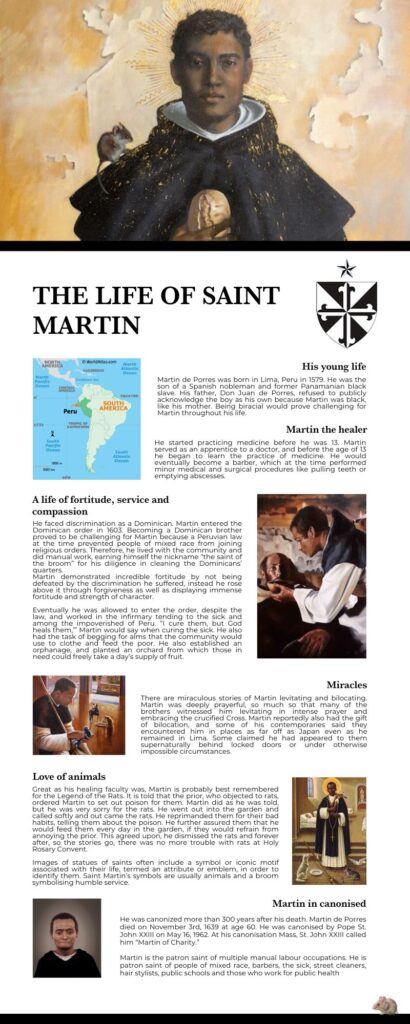An extract taken from ‘All For God’s People – 100 Years Dominican Sisters King William’s Town’ 1977
In 1947 Mother General Demetria Hemmer, accompanied by Mother M Alacoque Brien, came to Hinckley from South Africa on a tour of visitation to our houses in Europe. During their stay in England they paid a visit to Stoke Lodge, Captain W Robertson’s Estate which was being offered for sale. Mrs Robertson was a convert to Catholicism and a great friend of Hinckley Convent. Since the house seemed adaptable for a Senior School and its lovely grounds ideal for a Boarding school later on, negotiations for its purchase were soon in progress.
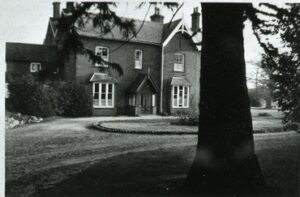
The property, now in the Sisters’ possession, extends over 80 acres of ground. Much of it, however, is leased to a neighbouring farmer as pasture land, while the rest is used as play- and sports-fields by the pupils. Stoke Lodge, or Blessed Martin’s Convent as it was renamed, is situated three miles distant from Hinckley, amidst the most salubrious and park-like surroundings. Thus it forms an ideal recuperative holiday spot for the Sisters as well. The house contained 18 rooms and, attached to it, a cottage and also, at the entrance to the drive, a gate-lodge. A lovely drive, about a quarter of a mile in length and bordered by majestic trees, led to the main building while its borders on either side displayed in spring a wealth of primroses, bluebells, daffodils and narcissi. The vegetable garden and orchard provides the community almost the whole year round with vegetables and soft fruit. Of course, the gathering and preserving of the latter keep the Sisters very busy outside school hours, but still they are an asset to the cook who would have to provide meals for over 200 pupils who stay there every day for lunch. Five buses bring them to school at 9 a.m. and convey them to their respective homes at 4.30 p.m. The pupils agreed to help with laying of tables, serving, etc. At the west end of the building and extending into the back-yard were the outhouses of the Lodge. These were transformed into cloak rooms, etc. which did credit to the architect and the builder.
September the 22nd, 1948 was the first school day at Bl. Martin’s, when 165 pupils were present and were taught by Sisters Miriam Illing, Suso Meier and two ladies, while Sister Wilhelma Enzensberger and a Swiss girl did the cooking as best they could on the little family stove. On the 4th May 1949 Holy Mass was celebrated in the little temporary chapel upstairs and from that day the Blessed Sacrament was permanently reserved at Stoke Golding.
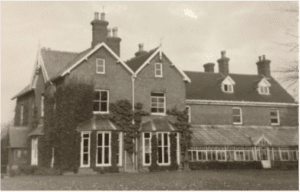
Since September 1952 Stoke Golding Convent has its own chaplain. Previous to Father Desmond Murray’s appointment the Sisters had to travel by car to Hinckley nearly every day for Holy Mass and other services. This was hard work especially for the Sister Chauffeur in foggy weather and when the roads were slippery in winter. Soon the new Convent became a place of interest and visitors came frequently. Some also became generous benefactors. To Mr W Orrill the community owes grateful thanks for the lovely monstrance and Benediction outfit. His daughter, Anne, died suddenly at the age of fourteen and so her father devoted her deposits in the Bank as memorials of his daughter. Six candlesticks were presented by Mrs Higham and these were first used on the altar when her own flame of life was fading out. She was the mother of two pupils, David and Bob; the former was ordained Priest after having joined the Benedictines. A beautifully woven cope and velum were donated by Mrs R Walker in memory of her brother and his family who lost their lives in an air-raid over Nuneaton in May, 1941. A Ciborium was a gift of Mr G Walker. Friends from Germany also sent useful articles for the new house. Last, but not least, mention must be made of the splendid vestments that came from the Mother House in King William’s Town with the arrival of Mother Demetria and Sisters Fides Woelfle and Consuela Gammel on 16th May 1953. (In the early years Sisters Tarcisia Schmid, Eulogia Neuer and Evarista Scharf also joined the staff.)
When the community had increased to thirteen Sisters the chapel proved too small. The finest room in the house, once the Robertson’s drawing-room, was then converted into a devotional chapel; But even this was too small when the people from the village attended Mass at “Stoke” on Sundays. For a time the drawing-room was used as a chapel of ease which meant a great deal of extra work. In spite of all these adaptations there was not yet enough room for all the pupils and four new classrooms were built. These were blessed and officially opened by His Lordship E Ellis of Nottingham who, on that occasion, highly praised the work of the Sisters. At the same time he blessed the statue of Our Lady of Lourdes in the charming grotto at the head of the drive. Although Stoke Lodge was fairly spacious, some of the rooms had to serve a dual and even a triple purpose; so the day came when the charming old Manor House had to make way for a new convent and more classrooms.
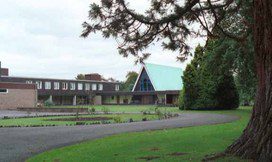
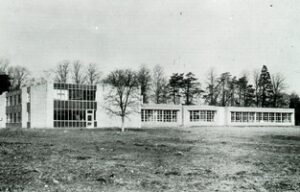
The Life of Saint Martin De Porres
Martin’s Early Years
Martin de Porres was born in Lima, Peru, of Spanish and black parentage. Inheriting his mother’s dark color, at times he was looked down upon by his aristocratic father, and, in early childhood, he was badly neglected. An intelligent boy, he was befriended by a doctor who taught him the art of healing. Martin began developing his prayer life at an early age. He had a deep devotion to our Lord’s Passion, and continually prayed to know what he could do in gratitude for the immense blessings of the Redemption. Deciding upon the religious life, he applied to the Dominican Convent of the Holy Rosary and was accepted as a servant. He gave himself to the lowliest duties in the house, and, finally, after many years, he was commanded by his superiors to accept the habit of a lay brother; he had considered that this was too great an honor for himself.
From its beginning the School of Blessed Martin was run as a fee-paying Private Independent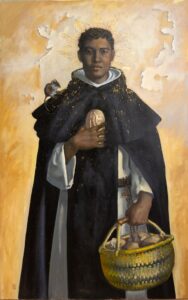 School, preparing candidates for the G.C.E. at O and A level. The Education Act of 1944, which stipulated that Primary and Secondary Education be provided in separate schools, made imperative the need for a Secondary Modern School for the pupils attending the All-age schools at Hinckley and Earl Shilton. This site of Stoke Golding, with its beautiful rural setting was considered an ideal spot for the project. The Right Rev Dr Ellis, Bishop of Nottingham, and Chairman of the Nottingham Commission for Schools, entered into negotiations with the Ministry of Education for the establishment of a Voluntary Aided Mixed Secondary School. At the request of the Diocesan Authorities and of the Parish Priest of St Peters, Hinckley, the Dominican Sisters agreed to co-operate in the scheme. Meanwhile two important changes took place: The Leicestershire Plan came into operation; the Catholic School would not be a Secondary Modern, but a High School catering for pupils of mixed ability from ages of 11 to 14 years and also providing facilities for 14 to 15-year olds, whose parents did not wish them to remain in school until they were sixteen. Blessed Martin de Porres, the Patron of the school was canonised in May 1962 and would henceforth be known as Saint Martin. Therefore the official title of the institution is now Saint Martin’s Catholic School. The extensions comprised a beautiful chapel, an Assembly Hall and Stage, Dining Hall, Kitchen, Staff Accommodation, Changing Rooms, Science Laboratories, Housecraft, Art and handicraft Rooms and four new Classrooms. The playing fields provide two Hockey pitches, two Football pitches, one Rugby pitch and one Cricket Square. The Architects were Messrs Bartlett & Gray of Nottingham and the Main Contractors were Messrs Greaves Brothers of Hinckley. The blessing and official opening was again performed by Bishop Ellis on 12th May 1965. It was during the previous decade, too, that several eminent visitors, among them Most Reverend Father Emmanual Suarez, Master General of our Order, His Eminence Joseph Cardinal Wendel of Munich and the Auxiliary Bishop John Neuhaeusler called and stayed at our Convent. Student Sisters from the Continent came to improve their English and to learn of English ways and customs at first hand. In 1962, Sister Louis-Bertrand Curran replaced Sister Miriam Illing at Headmistress of St Martin’s School, while the latter transferred to Hinckley. A special word of thanks is due to the friends of the Sisters who had helped them financially in the erection of St Martin’s School by arranging Sales, May Fairs and Christmas Draws. May God reward them for the part they played in providing Christian education for our youth!
School, preparing candidates for the G.C.E. at O and A level. The Education Act of 1944, which stipulated that Primary and Secondary Education be provided in separate schools, made imperative the need for a Secondary Modern School for the pupils attending the All-age schools at Hinckley and Earl Shilton. This site of Stoke Golding, with its beautiful rural setting was considered an ideal spot for the project. The Right Rev Dr Ellis, Bishop of Nottingham, and Chairman of the Nottingham Commission for Schools, entered into negotiations with the Ministry of Education for the establishment of a Voluntary Aided Mixed Secondary School. At the request of the Diocesan Authorities and of the Parish Priest of St Peters, Hinckley, the Dominican Sisters agreed to co-operate in the scheme. Meanwhile two important changes took place: The Leicestershire Plan came into operation; the Catholic School would not be a Secondary Modern, but a High School catering for pupils of mixed ability from ages of 11 to 14 years and also providing facilities for 14 to 15-year olds, whose parents did not wish them to remain in school until they were sixteen. Blessed Martin de Porres, the Patron of the school was canonised in May 1962 and would henceforth be known as Saint Martin. Therefore the official title of the institution is now Saint Martin’s Catholic School. The extensions comprised a beautiful chapel, an Assembly Hall and Stage, Dining Hall, Kitchen, Staff Accommodation, Changing Rooms, Science Laboratories, Housecraft, Art and handicraft Rooms and four new Classrooms. The playing fields provide two Hockey pitches, two Football pitches, one Rugby pitch and one Cricket Square. The Architects were Messrs Bartlett & Gray of Nottingham and the Main Contractors were Messrs Greaves Brothers of Hinckley. The blessing and official opening was again performed by Bishop Ellis on 12th May 1965. It was during the previous decade, too, that several eminent visitors, among them Most Reverend Father Emmanual Suarez, Master General of our Order, His Eminence Joseph Cardinal Wendel of Munich and the Auxiliary Bishop John Neuhaeusler called and stayed at our Convent. Student Sisters from the Continent came to improve their English and to learn of English ways and customs at first hand. In 1962, Sister Louis-Bertrand Curran replaced Sister Miriam Illing at Headmistress of St Martin’s School, while the latter transferred to Hinckley. A special word of thanks is due to the friends of the Sisters who had helped them financially in the erection of St Martin’s School by arranging Sales, May Fairs and Christmas Draws. May God reward them for the part they played in providing Christian education for our youth!
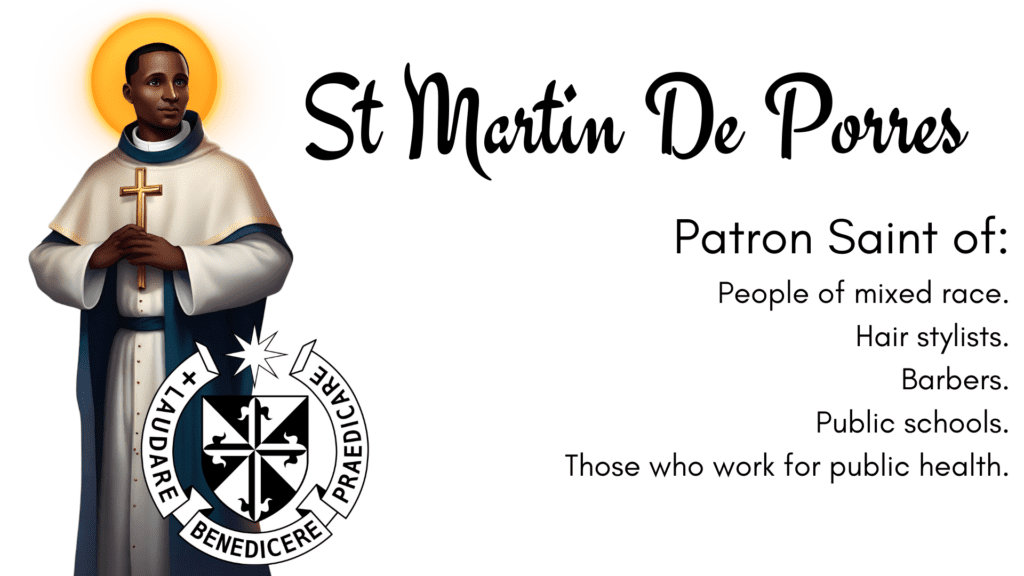
Minister to All
The report of Martin’s skill as a surgeon and healer soon spread abroad. As much by his prayers as through medical knowledge, he cured the most frightening diseases: bringing from near death a priest who had a badly infected leg; healing the fingers of a young student, who had feared that an accident had ruined his hopes for the priesthood; making whole again so many people afflicted with so many diseases that no one could attempt to count them. In addition to the gift of healing, he was endowed with that of bilocation; he was seen in Mexico, Central America, and even Japan, by people who knew him well, whereas he had never been out of Lima since entering the Order. He passed through locked doors by some means that was known only to himself and God; he appeared at the bedside of sufferers without being asked and always soothed the sick even when he did not completely cure them. Even sick animals came to him for healing. Great as his healing faculty was, Martin is probably best remembered for the Legend of the Rats. It is told that the prior, who objected to rats, ordered Martin to set out poison for them. Martin did as he was told, but he was very sorry for the rats. He went out into the garden and called softly and out came the rats. He reprimanded them for their bad habits, telling them about the poison. He further assured them that he would feed them every day in the garden, if they would refrain from annoying the prior. This agreed upon, he dismissed the rats and forever after, so the stories go, there was no more trouble with rats at Holy Rosary Convent. One time Martin was on a picnic with the novices, and having overstayed their time, they suddenly realized that, even with expending their best efforts, they could not be home in time for prayers. Martin bade them join hands, and, before they knew what had happened, they were standing in the convent yard, unable to explain how they had covered the several miles in a few seconds. These and many other startling miracles led to Martin being called a saint, even during his lifetime.
A Saint for Our Times
In our own day, the miracles continue. He lived a life of almost constant prayer, and he practiced unbelievable austerities. He worked at hard and menial tasks without ever losing a moment of union with God. His charity, humility, and obedience were extraordinary. Pope John XXIII raised Martin de Porres to the altar of the Church on May 5, 1962.
[This short biography of St. Martin was taken from Jean Marie Dorcy’s book, St. Dominic’s Family. Tan Books and Publishers, 1983]
